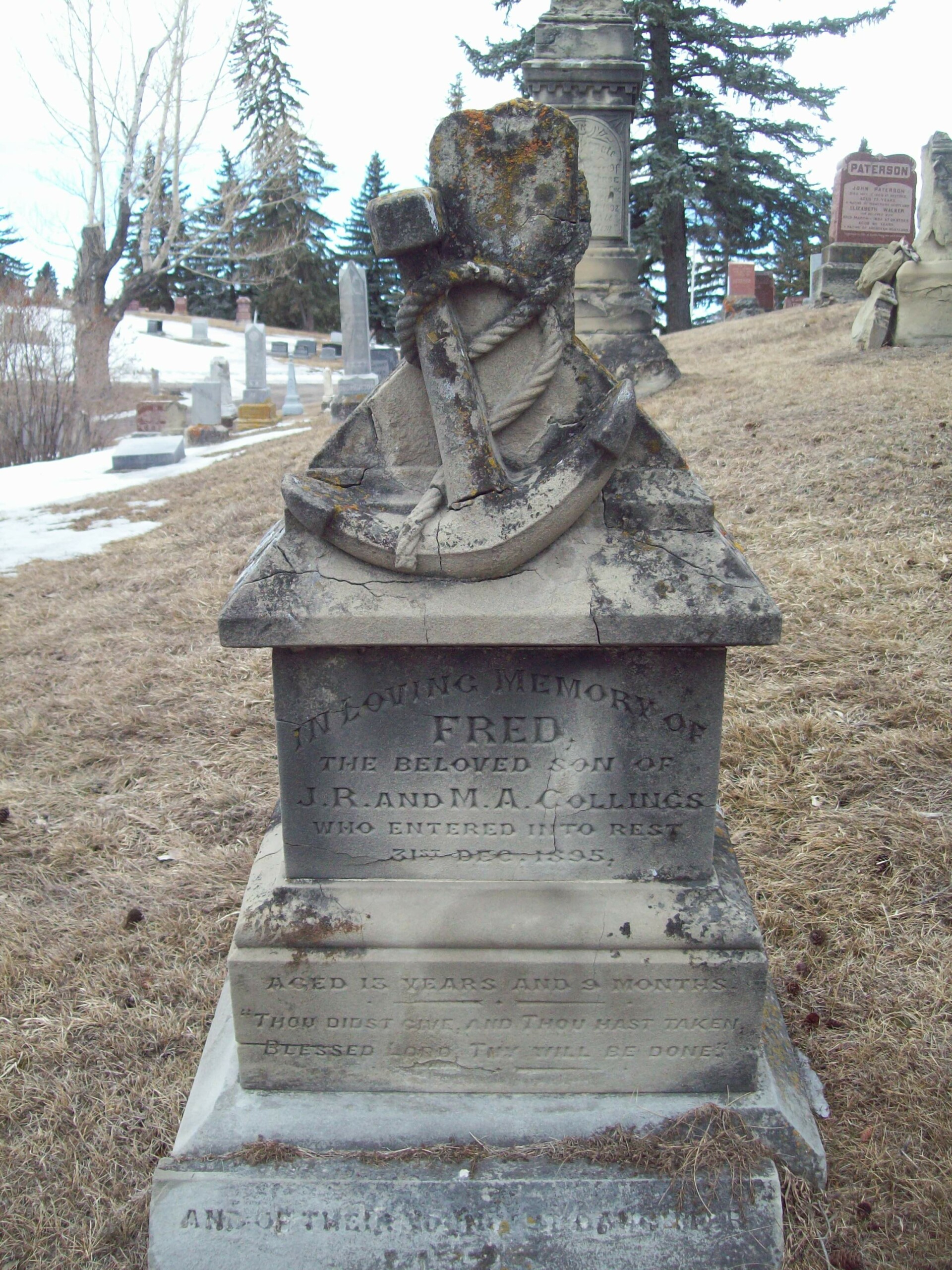Holding Fast

Photo by Amanda Borys
Fred Collings had spent the day of Dec. 13, 1895, with his friend Frank Martin. The two boys were out with their revolvers practicing shooting at targets. Just prior to 9 PM the pair returned to the telegraph office, where Frank worked as delivery boy, to clean their weapons. It is said that Fred mockingly challenged Frank to a duel, at which time the two boys partially reloaded their revolvers and turned the cylinders to where they thought the revolvers would not fire. On a count of 3, 2, 1, the two friends fired at each other. Fred’s weapon did not fire a bullet, however Frank did not set his up correctly and he accidentally shot Fred in the forehead.
The sound of the shot captured people’s attention and Fred was provided with immediate first aid before being taken to the hospital. Doctors on duty operated immediately but had difficulty in locating and removing the bullet. Despite the severity of the wound, Fred seemed to be making a strong recovery and, on Christmas Day, he was reported to have been bright and lively. But by Boxing Day he had become feverish. Fred Collings would die on Dec. 31, 1895, at 5 AM at the age of 13 years and 9 months old. Junior members of the Foresters, an organization which Fred was a part of, were asked to attend the funeral.
The epitaph chosen for Fred’s headstone “Thou didst give and thou hast taken. Blessed Lord, thy will be done” speaks to the family’s resignation at the loss of their young child.
A plaque at the bottom of the headstone reads “and for their youngest daughter, Lizzie”. According to the burial record for Union Cemetery, Fred shares a grave with Elizabeth Taylor, who died in March 1915. An obituary for Elizabeth Taylor, the beloved wife of Morris A. Taylor, indicates this Elizabeth Taylor died on March 2, 1915, at the age of 37, making her a good candidate to be Fred’s sister. While the use of the term “youngest daughter” seems to imply that Lizzie died young, the fact she has a different surname from her brother would seem to indicate she was a married woman at the time of her passing and, if this obituary is for Lizzie Collings, she would have been four years older than Fred.
Their parents Joseph Robert. and Mary Ann Collings left Calgary for Vancouver, where they resided until their deaths in 1921 and 1931. They are buried together in K section, perhaps preferring to be close to their lost children in death.
For Fred’s headstone, his family chose a sandstone marker carved into the shape of an anchor with a rope. The cut rope indicated the end of a life, while the anchor itself is said to represent hope. The anchor is an old Christian symbol, dating back to the Roman era when early Christians were persecuted for their beliefs. It is said to depict hope and steadfastness. Just as an anchor keeps a ship safe and away from potentially perilous shores and holds it fast in a storm, a person’s faith can keep them safe as they travel through the dangers of life. An anchor also has the appearance of a cross. It is said that early Christians would mark homes that were safe places of refuge with anchors. They also appear in Roman catacombs as a symbol of the Christian belief in eternal life when the one on this plane ends.
Use of anchors as Christian symbolism began to fade out by the middle of the 3rd Century and disappeared completely after 300 AD. Some say this is because Christians no longer needed to hide themselves. Others suggest it was due to linguistics, as the Church chose Latin over Greek. In Greek, ‘ankura’ sounds similar to ‘en kurio’ or “in the Lord”. The anchor is also mentioned in Hebrews 6:19-20.
The anchor saw a resurrection as graveyard symbolism starting in the 1600s, where it would be used on both the grave markers of sailors, as well as on those of devote Christians. And, in Union Cemetery, on the grave of a young boy who died too early.
